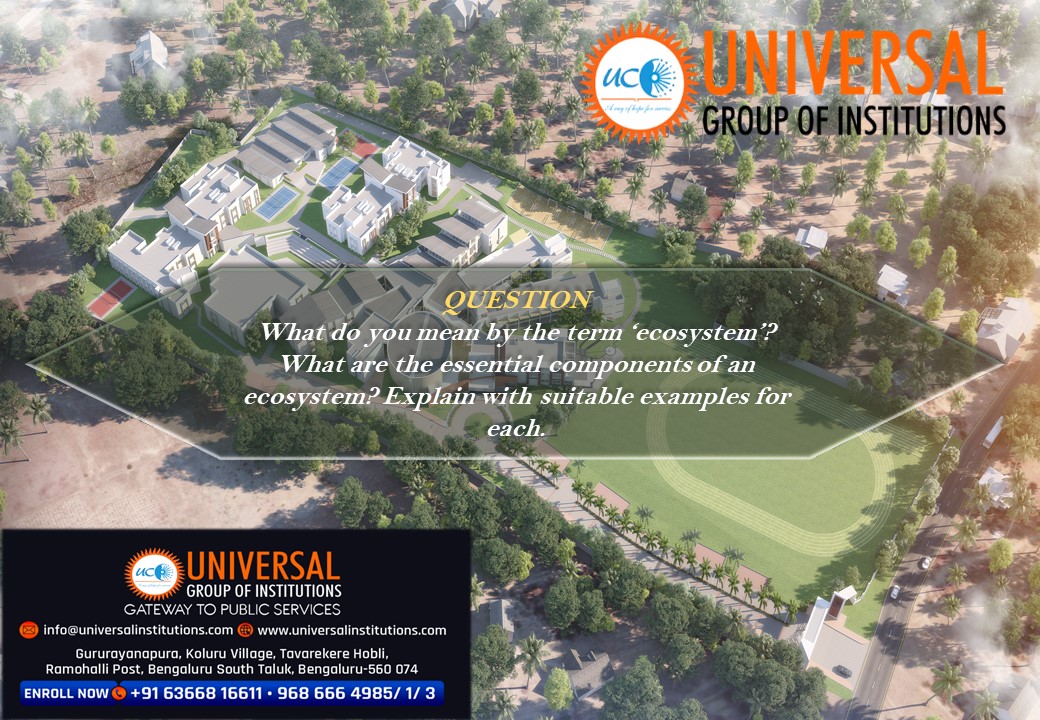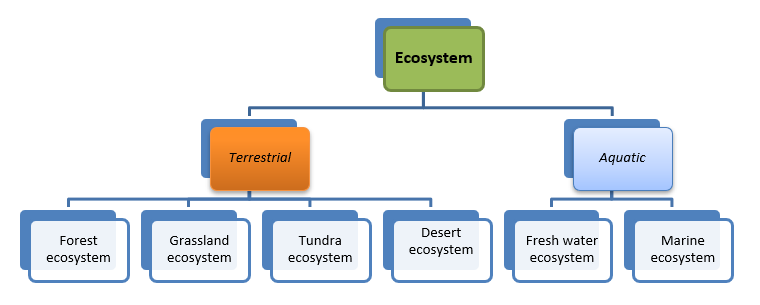What do you mean by the term ‘ecosystem’? What are the essential components of an ecosystem? Explain with suitable examples for each.
Introduction:
Ecosystem- It is an integral part of ecology where the living and non-living things are present. The interaction between these will constitute an eco-system. In simple words, the environment comprising organisms can be called as an ecosystem.
Body:
The classification of ecosystem:
The components of ecosystem can be classified as:
1) Biotic- This includes all the living organisms such as microbes, plants & animals. These can be further classified as
a) Producers- These organisms are also called as autotrophs meaning own food preparers. Green plants belong to this category
b) Consumers- These organisms are heterotrophs which depend on producers for food. They are further classified into herbivores, carnivores, omnivores.
c) Decomposers- These are the micro-organisms such as bacteria and algae which depend on dead and decayed organisms.
2) Abiotic- This includes the non-living components such as soil, water, air, temperature etc.
There is a continuous interaction between the biotic and abiotic components. These are called as bio-geo chemical cycles. Ex. Water cycle, Oxygen cycle, Carbon cycle, etc. These cycles ensure that there is adequate supply of nutrients to the organisms and balance is maintained.
Conclusion:
The activities of human beings such as pollution are altering the balance of the ecosystem in an adverse way. Sometimes these are irreversible in nature and can cause effects that results in extinction of species, climatic changes etc. So, we humans need to think of long term consequences of our activities and take necessary steps.






